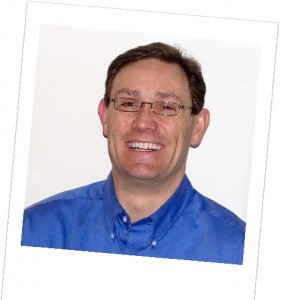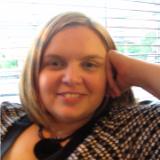Leadership Decisions – A Lesson From McDonalds
In this week’s guest post teambuilding coach Sean Glaze shares his expertise and knowledge.
Leadership Decisions – A Lesson From McDonalds
by Sean Glaze
Can you close your eyes and see the menu board from your local McDonald’s?
Most of us who have visited often with our kids can effortlessly envision their value meal options and can order things from the “dollar menu” without even looking up.
I thought of this after my son’s basketball game when our family chose to stop in for a late lunch, too far from home to get away with making them settle for chips and a turkey sandwich.

We all entered the restaurant, walked to the back of the short line, and then were greeted by the cashier who asked what we would like to have. Of course, my son was very clear before we had arrived. He wanted a Big Mac, fries, and a chocolate shake. When I told him it didn’t come with a chocolate shake, he even offered to pay the difference, saying “I’ve got money at home, dad- I just really want a shake!”
I gave him a parental “We’ll see…,” but was pretty sure he could survive without the shake.
My wife and our two daughters were not ready to decide as quickly, though.
They have been to McDonald’s restaurants on numerous occasions before, but still struggled to choose what it was they wanted, and grew even more uncomfortable when they saw a group of incoming customers. Feeling rushed and exasperated, they responded in three very different ways.
I thought of a quote from Seth Godin – “You don’t need more time. You just need to decide”
My wife said to me, “Oh, goodness – just get me something. You know what I like.” My oldest daughter said to me, “Whatever is cheap dad- I don’t really care.” And my youngest daughter followed that with, “I’ll just get whatever she does, okay?”
At first I was a bit shocked, but I hurriedly ordered, and then waited at the counter while I considered what had just happened while our food was prepared.
My family was a microcosm of decision making styles!
Leaders must make decisions – and the higher you climb, the more important your decision become. But it occurred to me that there were four very distinct examples of decision making in our family – at least in this illustration…
- Some people refuse to make a decision and let others choose for them – that isn’t very healthy, and usually results in dissatisfaction of some kind – usually regret by the decision maker for their hesitancy.
- Some people want to take the easiest route, wanting only to invest the smallest amount to get by with whatever is cheapest in terms of effort or resources. This “penny wise – pound foolish” approach is dangerous, because it fails to consider the long term effects that their short sighted decisions might have.
- Some people just follow the crowd and do what their friends or acquaintances will deem as acceptable. But what is popular isn’t always best, and what is best isn’t always popular… and strong leaders must be willing to make decisions that are unique to their situation and organizational needs.
- And some people want more than is offered to the masses on a menu. They want more and are willing to pay the price to enjoy it. They push their people to perform at a higher level and demand extraordinary results – and they recognize that it is often rewarding to invest more than others think is necessary.
I stood there thinking to myself that the McDonalds menu in front of me was what we all look at as leaders of any organization. We all have a menu of opportunities and goals– whether it is a principal setting teacher expectations of performance or a coach setting goals for the season, we all make decisions that impact the people we work with.
Joel, a prophet in ancient Israel, wrote “Multitudes, multitudes in the valley of decision!” (Joel 3:14). I can only imagine how that looked; people milling around confused and wondering which way to go. Things haven’t changed much over the past 2,800 years.
The question of how to approach your decisions as a leader then becomes at least as clear as how to approach what we’re having for lunch. Be sure to order what you want, and consider what it will cost, whether up front or in the future.
Everyone has a menu in front of them. Everyone is responsible for their choices, and must stomach it – even if it was a choice they tried to evade having to make for themselves.
And everyone is capable of asking for and getting more than the ordinary meal.
Yes, I got my son the chocolate shake. Because he asked for it… Because he was willing to give more to enjoy something he really wanted… But mostly because I wanted a taste!
So, the next time you go into a McDonalds – look up at the menu and smile. Know that making decisions is a skill you can develop – both in yourself, and in those on your team.
And encouraging them to participate in team decisions is important, even when sometimes they make mistakes. Mistakes are less common, though, when people take ownership.
If you want your people to invest in team decisions, consider the impact that a full or half day of fun Atlanta teambuilding and leadership training could have on your organization.
With improved morale, communication and leadership skills they will be far more willing to collaborate and contribute to the team’s success – and as a leader, that is ultimately what your decisions are supposed to produce.
About the author
 As a speaker, author, and team-building coach, Sean Glaze entertains and influences groups with a unique blend of dynamic content, interactive activities, and practical action steps. His team-building website, www.GreatResultsTeambuilding.net, provides more information on the team-building events, speaking engagements, and training workshops he offers.
As a speaker, author, and team-building coach, Sean Glaze entertains and influences groups with a unique blend of dynamic content, interactive activities, and practical action steps. His team-building website, www.GreatResultsTeambuilding.net, provides more information on the team-building events, speaking engagements, and training workshops he offers.
If you are part of a business, school, or athletic team that needs to improve communication, inspire accountability, energize morale, contact him and transform your group into a more productive team!
 Jen Waller is on a mission to support, nurture and encourage coaching skills and talents from non-coach to coach and beyond.
Jen Waller is on a mission to support, nurture and encourage coaching skills and talents from non-coach to coach and beyond. Frederique Murphy is a business mindset strategist, who founded her business to focus on her passion: transformation! Thanks to her
Frederique Murphy is a business mindset strategist, who founded her business to focus on her passion: transformation! Thanks to her